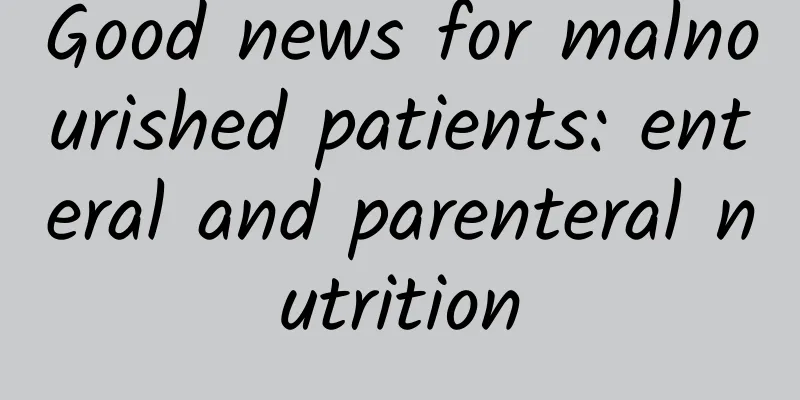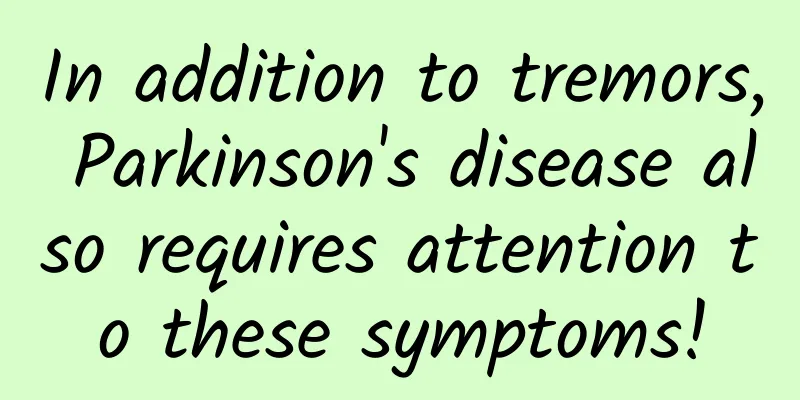Good news for malnourished patients: enteral and parenteral nutrition

|
Malnutrition is a global health problem, especially among the elderly, patients with chronic diseases and those recovering from surgery. Malnutrition not only affects the patient's physiological functions, but may also lead to decreased immunity, delayed wound healing, etc. Therefore, physical conditioning and nutritional supplementation for malnourished patients are very important. Parenteral and enteral nutrition supplementation, as an effective nutritional support method, has been widely used in clinical practice in recent years. 1 Definition and indications of parenteral enteral nutrition 1.1 Definition Parenteral Nutrition (PN) and enteral nutrition (EN) are two main ways of nutritional supplementation. Parenteral nutrition is the direct infusion of solutions containing essential nutrients such as amino acids, fats, carbohydrates, vitamins and minerals into the blood through intravenous routes, such as peripheral venous catheters (PVC), peripherally inserted central venous catheters (PICC) intravenous infusion ports (PORT), etc., to meet the body's basic metabolic needs. Enteral nutrition is the primary way of nutritional support for patients with normal gastrointestinal function. Nutritional solutions can be introduced into the gastrointestinal tract through oral administration such as diet or special nutrient solutions, or through gastric tubes, nasointestinal tubes, gastrostomy, jejunostomy, etc. 1.2 Indications The indications for enteral nutrition mainly include situations where the gastrointestinal function is basically normal but the intake of nutrients is insufficient or cannot be taken in. For example, patients with dysphagia, anorexia, impaired consciousness, etc. cannot meet their nutritional needs through normal diet, and enteral nutrition becomes an effective way of supplementation. The indications for parenteral nutrition are mainly for patients with gastrointestinal dysfunction or inability to eat. In diseases such as short bowel syndrome and severe pancreatitis, the patient's gastrointestinal function is severely affected, and it is impossible to obtain sufficient nutrition through oral or enteral nutrition. At this time, parenteral nutrition is particularly important. It can provide necessary nutrients directly through the vein to maintain the patient's life activities. In general, as long as the intestinal function is still there, enteral nutrition support is preferred. 2 Specific application and implementation strategy of enteral nutrition 2.1 Application Background Enteral nutrition is mainly suitable for patients with intact gastrointestinal function, and provides patients with necessary nutrients through oral or tube feeding. 2.2 Implementation Strategy (1) Select appropriate nutrient solution: According to the patient's nutritional needs and gastrointestinal conditions, select appropriate nutrient solution, such as high-protein, high-fat or specially formulated nutrient solution. (2) Adjust the infusion speed and volume: In the initial stage, a small amount of nutrient solution should be given at a low speed, and then gradually increased to the target volume to reduce gastrointestinal discomfort. (3) Monitoring and adjustment: Regularly monitor the patient's nutritional status, gastrointestinal reactions, etc., and adjust the nutritional plan in a timely manner. 2.3 Physiological mechanisms and advantages Enteral nutrition is more in line with the physiological needs of the human body, helps maintain the integrity of the intestinal mucosa, reduces the risk of intestinal bacterial translocation, and has a relatively low cost. 3 Specific applications and strategies of parenteral nutrition 3.1 Application Background For patients with severely impaired gastrointestinal function or inability to eat, parenteral nutrition becomes a necessary means of nutritional support. 3.2 Implementation strategy (1) Select appropriate nutrient solution: According to the patient's specific condition and nutritional needs, select nutrient solution containing appropriate proportions of amino acids, fats, carbohydrates, trace elements, vitamins and other ingredients. (2) Infusion route and time: The doctor will assess the patient's expected use of parenteral nutrition solution. If the use time exceeds 2 weeks, central venous infusion can be selected to reduce fluid leakage and phlebitis. (3) Monitoring and adjustment: Pay close attention to the patient's biochemical indicators, weight, nitrogen balance, etc., and adjust the nutrient solution composition and infusion rate in a timely manner. 3.3 Physiological mechanisms and risks Parenteral nutrition can quickly replenish nutrients, but long-term use may lead to risks such as phlebitis and metabolic complications. Therefore, enteral nutrition should be resumed as soon as possible to reduce the use time of parenteral nutrition. 4 Application of enteral and parenteral nutrition in malnourished patients For malnourished patients, parenteral and enteral nutrition support can effectively improve their nutritional status. In practical applications, a reasonable nutrition support plan should be formulated according to the patient's specific condition and nutritional needs. For patients with basically normal gastrointestinal function, enteral nutrition is the first choice; for patients with gastrointestinal dysfunction, parenteral nutrition should be considered. When necessary, parenteral and enteral nutrition can be combined to meet the patient's nutritional needs. Conclusion: Parenteral and enteral nutrition support is an important treatment for malnourished patients. A reasonable nutrition support plan can effectively improve the nutritional status of patients and improve their quality of life. However, parenteral and enteral nutrition support is not flawless, and we still need to pay attention to its possible complications. In the future, with the continuous advancement of medical technology, we look forward to the emergence of safer and more effective nutrition support methods to bring more good news to malnourished patients. Author: Ning Weiwei , Shenzhen Hospital of Integrated Traditional Chinese and Western Medicine |
<<: Is the KP.2 variant of the new coronavirus more contagious?
>>: Does wearing glasses really make your eyes bulge?
Recommend
A woman dreams of drinking water
Water is an essential element. In addition, water...
What are the symptoms of progesterone deficiency?
Progesterone is a common estrogen and is very imp...
Will a boy give away his first time casually? How to make a boy have a memorable first time?
Boys' first time experience often ends in unh...
How to prevent pregnancy after removing the IUD
Women who have installed contraceptive rings must...
Is vaginal reduction surgery harmful to women?
Many women face the problem of vaginal loosening....
Is the belly big or the belly big during pregnancy
As pregnancy progresses, your abdomen will become...
Do you have lumbar disc herniation at a young age? Try these methods to relieve the pain!
I don’t know if you have noticed that when the we...
Can I drink red wine during my period?
We know that red wine is a kind of wine with very...
What should I eat to increase amniotic fluid?
An important indicator during pregnancy is the ob...
What should I do if I get infected after an abortion?
After an artificial abortion, once an infection o...
What to do if you have yeast infection during pregnancy
Mold is a type of bacteria that is widely present...
World Down Syndrome Day: From science to care, the truth we need to know
March 21 of each year is designated by the United...
Hemorrhoids are very painful during the expected period
Pregnancy is a very happy thing for many women, a...
What causes chest itching?
Nowadays, we often encounter various skin symptom...
Can I eat motherwort if I have little menstrual flow?
Excessive or insufficient menstrual flow is actua...









